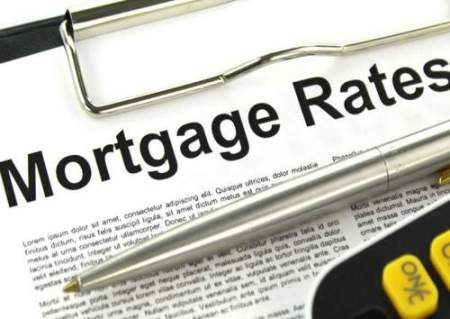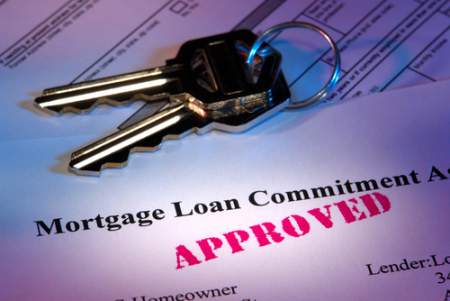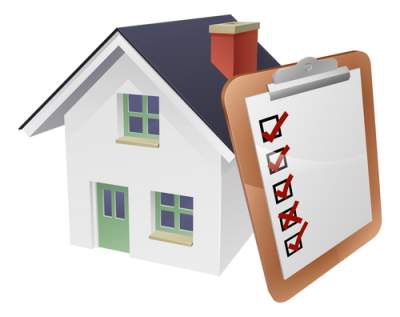Most home buyers won’t have the money in hand to pay cash for a home. For this reason, it’s common to secure a home mortgage loan. This process can seem intimidating if you don’t understand some of the details involved. Let’s take a closer look at these mortgage loan basics for home buyers.
What is a home mortgage loan?
Those wishing to purchase a home often use a home mortgage loan to make the purchase. Mortgage loans are received through banks, credit unions, and mortgage lending companies.

You’ll repay the amount of the loan through monthly payments that include interest that is owed on the amount borrowed. The terms of the loan will determine the length of the loan and the amount of the payments.
Are there different kinds of mortgage loans?
Traditional mortgage loans are secured through a credit union, mortgage lender, or bank. These loans typically require a down payment that is a percentage of the property’s cost.
The Federal Housing Administration (FHA) loans are available for people who may not be able to make a large down payment or qualify for a traditional loan. The loans are guaranteed and the repayment set up through lenders that work with them, but they may have higher interest rates.
What’s the difference between variable and fixed rate mortgages?
There are times when you’ll have a choice between a variable or fixed rate mortgage. When you choose a variable interest rate, you can expect the monthly mortgage payment to fluctuate with changes in the current interest rate.

You may have a low interest rate for a time that creates small mortgage payments and a higher interest rate that increases the monthly payment.
If you choose a fixed mortgage rate, you can expect that your mortgage amount each month will remain the same for the term of the loan. This means that the interest rate is locked in for a time.
How do I apply for a home mortgage loan?
TransUnion, Experian, and Equifax are credit reporting agencies. You’ll want to order a copy of your credit report from each of them, and you can do this for free once a year due to the Fair Credit Reporting Act.

We suggest that you order all three because each one may contain different information. You can compare them and check for errors.
[su-note]Once you have this information in hand, gather important documents that will verify your financial status before visiting the mortgage lender. They will provide you with an application.[/su_note]Should I get pre-approved for a mortgage loan?
When you’ve set your mind on purchasing a home, it’s a good idea to get a mortgage loan pre-approval. During the pre-approval process, you’ll bring in proof of income and other information.
A pre-approval gives you a target price range for buying a home. It can be disappointing to get your heart set on a specific property but find out that it’s outside of your budget.

Having a set price range can save you time and frustration by helping you focus on homes you can afford. The pre-approval letter can hold weight with a home seller when they are receiving multiple offers for their property.
If your offer comes up against another that doesn’t have a pre-approval on hand, the seller may favor your offer because it shows you are serious about the purchase and can follow through if the offer is accepted.
What happens during the approval process?
Every mortgage loan that is processed must go through the underwriting process before final approval is granted. The lender uses the mortgage loan underwriting process to assess risk and ensures the buyer meets all the minimum requirements to obtain the loan.

The underwriting process is lengthy and requires the lender to examine many documents from the buyer. The lender will build a file for the borrower that contains all the documents to be turned in to the underwriter.
The underwriter’s primary function is to assess risk. They will check the following thoroughly:
- Credit history
- Home appraisal
- Home survey
- Title search
- Verify employment and income
- Debt to income ratio
- Verify savings and down payment
- Ensure all conditions and requirements are met

The amount of time to complete the underwriting process depends on the type of loan for which you’re applying. FHA loans have more strict guidelines than conventional loans. Therefore, the underwriting process can take anywhere from just a few days to several weeks to complete.
Homes for Sale in Worcester County
Dealing with an experienced lender who knows the underwriting process and is knowledgeable about the information needed for the underwriter will ensure the process goes along smoothly. To increase your chances of getting through the underwriting process without delays, you should do the following:
- Ensure you have all the required documents at the beginning of the process
- Do not apply for other types of credit
- Provide a rapid response to any requests from your lender
- Be forthcoming and honest about your situation and finances
- Stay in regular contact with your lender
- Provide as much documentation as you can even if it has not been requested, but you think it will be helpful

Many borrowers feel a little anxiety during the mortgage loan underwriting process. Just remember, you will do fine if you follow the advice of your lender and provide everything requested.
What is a closing disclosure form?
One important document that the lender is required to provide you with at least three days before the loan closing is the closing disclosure form. This form is a five-page document that will state important details about your loan including:
- Loan terms
- Projected monthly payments
- Closing costs
- Escrow account details

The closing disclosure form will give details on all the closing costs and who is responsible for paying what. You will also see a chart which provides a comparison of the actual costs versus what was shown on the Loan Estimate. The document further explains details of the loan, including:
- If the loan is assumable
- If the loan has a demand feature
- The late fee penalty and when it will be imposed
- If there is a negative amortization feature
- If partial payments will be accepted
- That the lender will have a security interest in the property
The closing disclosure form is designed to give you all the details you need regarding your loan. It provides complete transparency in explaining the terms and conditions of your loan. If there’s something on the form which you do not understand, you can contact your lender and they can explain the details.

